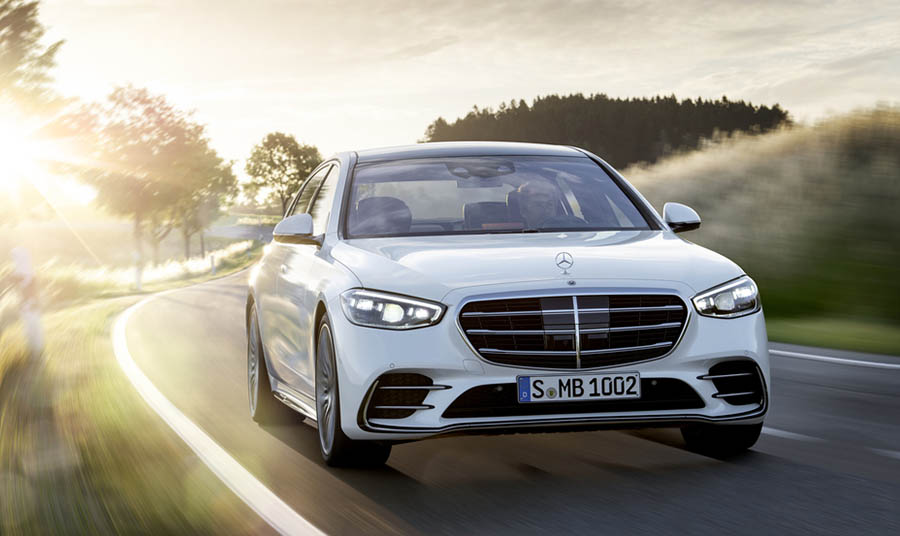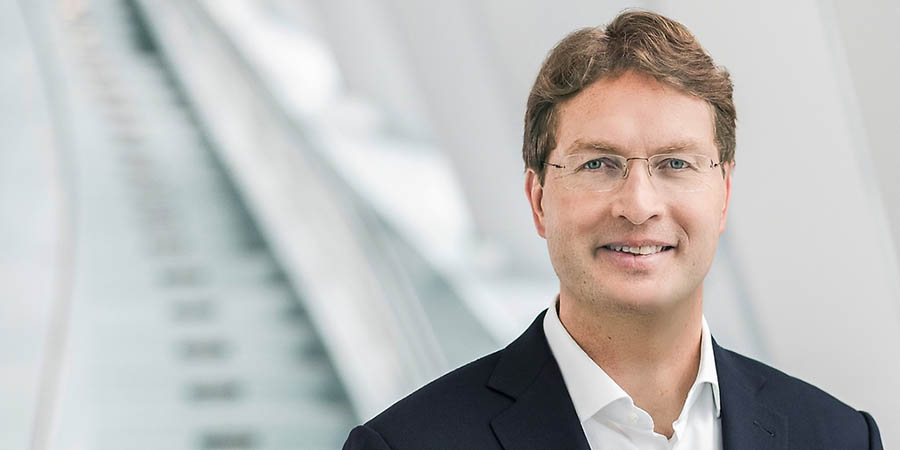With the new Mercedes S-Class, Daimler finally wants to get out of the crisis. There is a chance for a comeback. But the luxury sedan alone will hardly save the company this time.

Hardly any of the big car manufacturers have ups and downs as close together as the Stuttgart Dax group. If the direction has been pointing upwards in the past few decades, it was mostly due to a model that is special in every respect: the S-Class.
The luxury sedan is the epitome of German engineering and, in the self-image of the Mercedes developers, is nothing less than “the best automobile in the world”. But even more important for Daimler: no other vehicle delivers such reliably high returns to the Swabians. A new variant of the S-Class rolls out to dealers every seven years. And it’s always about the whole.
When the last version of the model appeared in 2013, things were bad for Daimler. The competitors BMW and Audi had so downgraded Daimler in terms of sales that the then CEO Dieter Zetsche had to fear for his job. Works councils and investors rebelled. With the presentation of the S-Class in the Hamburg factory halls of Airbus, Zetsche initiated the turning point. Golden years followed.
Success waned as the current S-Class got older. Diesel scandal and corona crisis hit Daimler. Now the group is at a low point again. In the half year there is a loss of 1.7 billion euros. Ola Källenius, who has been chairman of the board in Stuttgart since May 2019, is under massive pressure.
The hopes rest again on the S-Class. The new edition of the luxury limousine will be presented to the world public on Wednesday in Sindelfingen. And just like seven years earlier with his mentor Zetsche, Källenius now wants to overcome the crisis with the flagship.
In fact, the chances of a comeback for the brand with the star are not bad. Mercedes sales normalize after the corona shock. In China, business is even booming with double-digit growth rates. And Daimler should soon put aside the greatest legal risk with a billions in comparison in the diesel scandal in the USA.
The result: confidence is growing again in the group. “There is light on the horizon again,” states a high-ranking manager. Investors are also optimistic: “After a fatal first half of the year for the industry, we are seeing significant improvements, including at Daimler,” said Stefan Bauknecht to the Handelsblatt. The fund manager at Deutsche Bank subsidiary DWS is convinced: “With the S-Class, Daimler will take a good step forward.”
It is true that the luxury sedan at the starting price of 89,128 euros last only represents three percent of the vehicle volume sold at Mercedes. But thanks to margins above 20 percent, the pulling power of the model is considerable. “If sales of the S-Class increase by 10,000 units, the company’s profit jumps up by hundreds of millions of euros,” says Bauknecht.
The CAR Institute estimates that Daimler should achieve a return of 15,000 to 20,000 euros per S-Class sold. With sales of 80,000 vehicles per year on average, this would correspond to an operating profit of around 1.5 billion euros. And yet the luxury sedan alone will not save Daimler this time.
“The S-Class effect is no longer as important as it used to be,” explains DWS expert Bauknecht. The reason: In the previous decades, the Mercedes model range was less diversified. Today there are more sporty off-road vehicles (SUVs) and makes from the tuning subsidiary AMG that also deliver high profit margins.
In addition, Daimler will compete with its top model in the future. Three quarters of a year after the S-Class, a fully electric counterpart of the Mercedes flagship, the EQS, should hit the streets. And internally it is clear: “Both models have to work,” it is said in unison from corporate circles.
More than 100 small computers on board
While the S-Class is supposed to fill the coffers at Daimler, the EQS with a range of 700 kilometers aims to finally overtake the Californian rival Tesla in terms of technology when it comes to electric cars. In the long term, it is also clear that the new S-Class will be the last of its kind.
“We are all aware that we are presenting a dinosaur here,” admits a Daimler manager. The car, known internally as the W223, will undoubtedly set standards again, but in terms of networking and ecology it is based on approaches from the old automotive world.
Once again, more than 100 control units are installed in the new generation of the S-Class, which have to be laboriously coordinated. Tesla, on the other hand, has long relied on a clever central computer as the top authority for drive, infotainment or energy management in its models. Software and hardware are decoupled from each other, which enables completely new business models.
The S-Class is also rather behind from an environmental point of view. In its most pompous version as a Mercedes-Maybach with a twelve-cylinder engine and 630 hp, the sedan cost more than 200,000 euros and, according to the NEDC test cycle, emits up to 421 grams of climate-damaging carbon dioxide (CO2) per kilometer. The model thus received the worst seal on the eight-level efficiency scale with a “G”.
After all: with half as many cylinders, the standard consumption of 14 liters is halved. The two-ton truck is of course not low in emissions. Especially since Daimler continues to rely fully on the combustion engine in the S-Class. Even the latest model is not available purely electrically, hybridized to the maximum. Daimler boss Källenius temporarily accepts the lousy ecological balance sheet of the S-Class in order to polish up the group balance sheet.
The presentation of the S-Class is an important milestone for Källenius in the implementation of his strategy. While his predecessor Zetsche had expanded the range to include small cars, Källenius is now focusing on the upper edge of the market. With luxury cars he wants to maximize Daimler’s profit and give the share a boost. Margin over crowd, is his mantra.
Rather unprofitable models like the compact B-Class are unlikely to receive a new edition. Källenius prefers to grow with SUVs, luxury sedans and derivatives from the subsidiary AMG. To ensure that the strategy is climate-compliant, Daimler will electrify all vehicles in the medium term – even the G-Class, which weighs almost 2.5 tons.
It’s about Daimler’s independence
Many major Daimler shareholders support the realignment of Mercedes. But the turnaround in Stuttgart is by no means a foregone conclusion. The group’s problems are too big. Källenius’ troop is insecure. More than 20,000 of the 300,000 jobs worldwide are being cut, and entire plants are available.

The mood in various corporate divisions is badly hypothermic, and business is also weakening considerably in some places. In the Mercedes passenger car division, things are looking up again, but Daimler Trucks, the Group’s second largest division, is still struggling with corona and crumbling market shares and escalating costs. “There is a lot of need for restructuring here,” complains DWS expert Bauknecht.
In addition, production in the entire group is “managed comparatively inefficiently”, states the capital market expert and calls for changes. “Every plant should be optimized. It needs more identical parts and modules and less complexity,” says Bauknecht. The variety of optional extras must be checked.
In Factory 56, a new assembly hall in Sindelfingen where the S-Class is produced, Daimler wants to show for the first time on Wednesday that the group has already significantly streamlined its processes. The only question is how long it will stay that way: In the past, savings rounds at Daimler were regularly followed by excessive spending. CEO Källenius now wants to interrupt this rhythm. The costs should remain at a lower level in the long term.
Källenius knows: This is the prerequisite for securing the Group’s independence in the long term. With the vehicle manufacturers BAIC and Geely, two companies from China are among the Swabian largest shareholders. And some in the group already fear a takeover – especially since the cutthroat competition in the auto industry is only just picking up speed.
“A few years ago nobody was interested in Tesla, Polestar or Nio,” says a Daimler veteran: “Today these companies are competing with us for sovereignty in electric and autonomous driving.” The electric car pioneer Tesla alone could sell more than two million cars a year by the middle of the decade.
The growth of the Californians is foreseeable at the expense of the established manufacturers. Because the overall automotive market is unlikely to grow at the same time. Despite everything, Stuttgart is confident that it will be among the winners at the end of the consolidation. But it is also clear: The next few years will be “tough” and the S-Class is no longer the sole savior, according to Daimler group circles.










Informative